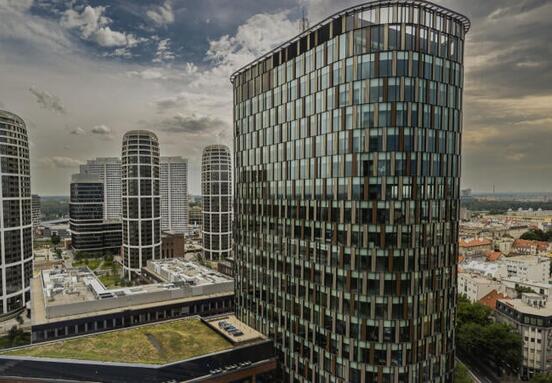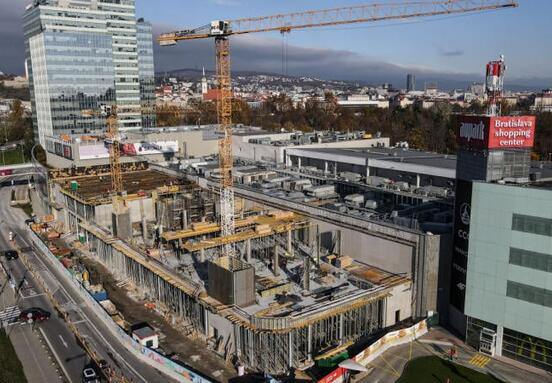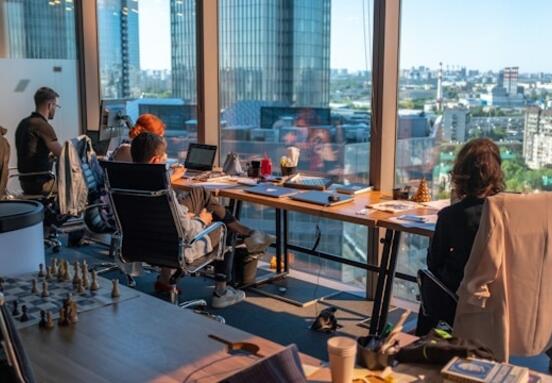HB Reavis is the most active Slovak developer in London. After the four buildings 33 Central, Cooper & Southwark, 20 Farringdon Street and Bloom Clerkenwell, the company has completed its fifth London project, reports Jana Ovesná, Saxo Bank PR Slovakia.
The building aims for the highest goals in terms of sustainability
The construction of the building generated less than 450 kilograms of CO2 equivalent per square meter (kgCO2e/m²), which is only half of the input value defined by the LETI organization. LETI brings together over 1,000 construction professionals working together and sharing know-how to take the UK to a carbon-free future. The company achieved this result through a combination of several measures, including the use of low-carbon EAF steel produced by electric heating and concrete mixes with a high content of GGBS - granulated blast furnace slag - as a low-carbon substitute for cement. She also re-used parts of the old building, which stood in the same place, and the entire exhibition was powered exclusively by green electricity. Likewise, HB Reavis replaced fossil fuels with hydrogenated vegetable oil.
The environmental commitment of HB Reavis also continues in the operational phase of the building. An important role in it is that the building operates entirely on electricity from renewable sources thanks to highly efficient systems, including a heat pump and photovoltaics. It is part of the innovative green lease agreements in place with tenants that will enable Worship Square to achieve an ambitious NABERS sustainability rating of 5.5* to ensure sustainability throughout the building's life cycle. In addition to NABERS 5.5*, the building also aims for other highest certificates in the field of sustainability and well-being - BREEAM Outstanding and WELL Platinum. It already has an A rating in the EPC energy efficiency rating and WiredScore Platinum and SmartScore Platinum certificates. These ratings catapult Worship Square to the forefront of the environmental peloton in the office market, and will also support tenants in meeting their own ESG goals.
A successful finish despite numerous obstacles
"I am very proud of our team. Despite the fact that Worship Square was born in the most difficult conditions, we managed to build a low-carbon office building of the future. Thanks to the cooperation of architects, consultants, contractors and tenants, it was possible to find innovative low-energy techniques that set a new standard for the office market," says Steven Skinner, executive director of HB Reavis responsible for development activities. Shortly after the start of construction, the covid epidemic broke out with a series of lockdowns that caused shocks throughout the real estate market. Construction costs increased by 25 percent and interest rates rose from 0.5 percent to 5.25 percent in less than 18 months. Along with covid, the growing trend of working from home was also a challenge. "Worship Square is also in demand because of its focus on the customer experience to foster community, increase productivity and attract and retain talent," he explained.
The amenities of Worship Square are exceptional even by London standards
People are the heart of the whole project. By incorporating the principles of biophilic design, it was possible to create an extensive "green heart" of the building, which cleans the air and promotes the health and well-being of users. They will benefit from a total of 3,200 plants, a roof terrace and several gardens. The building also includes a vermicompostor that processes food waste. waste and turns it into high-quality compost, which will then be used in the Worship Square green area, thus supporting a sustainable circular economy.
The Worship Square building is fully focused on the customer experience. It will have its own barista, a fitness studio, a spacious terrace for summer educational activities and social events, as well as a top concierge application. Part of the concept is coworking HubHub, which will open its second London branch this year and offer flexible and affordable options for small and medium-sized companies. The equipment, layout and flexibility of the office space and advanced technology combine to create a holistic design to provide world-class workspaces that reflect the changing needs of employees in the post-pandemic era.







